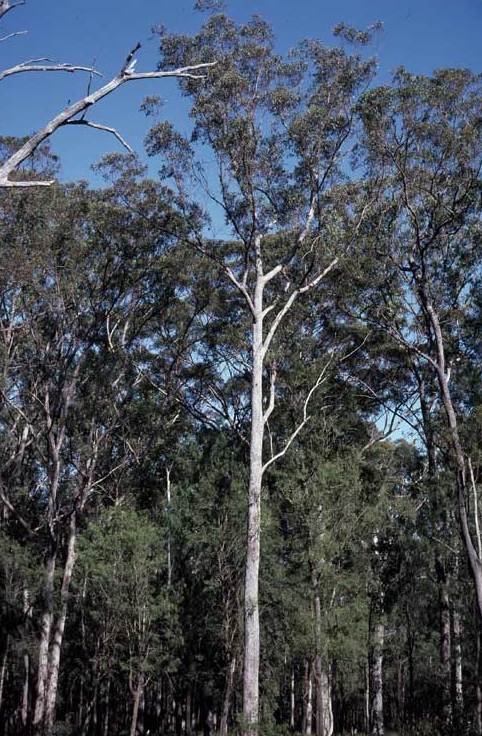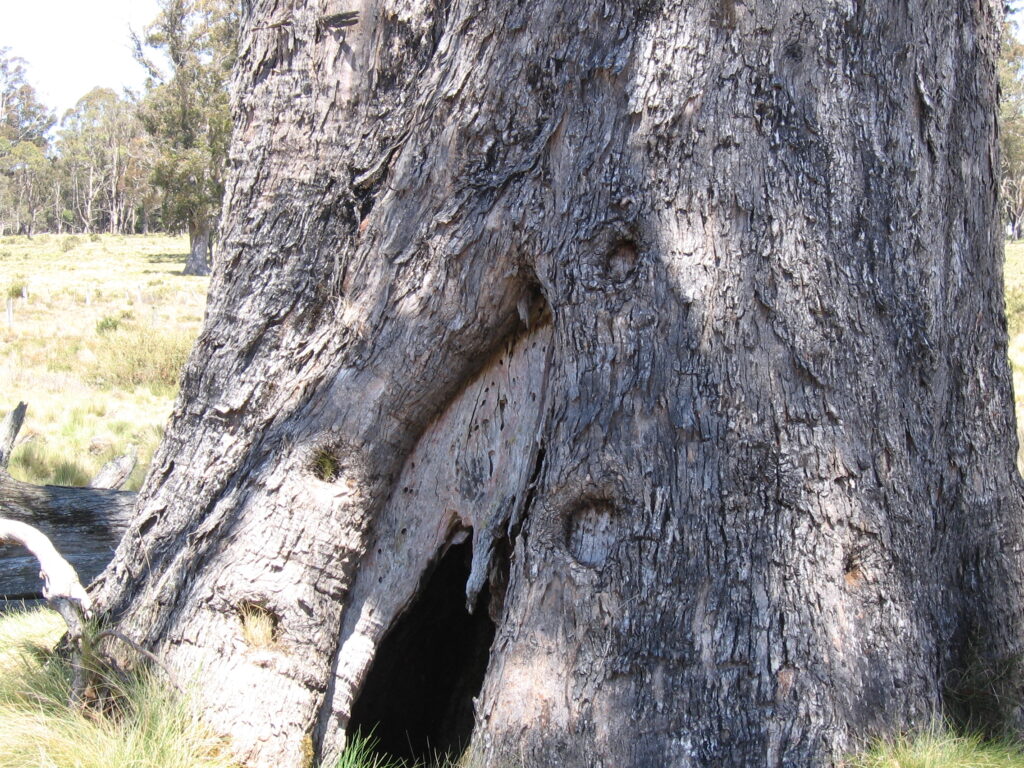Our walks through the forest stimulate a lot of my blogs on forestry. I often see some features and plants which remind me of the Aboriginal uses of the bush I learnt while I was a forester.
Over my 33-year career, I have tried to understand the indigenous use of the forests. I have studied their land management practices and tried to recreate cultural burning on native grasslands in Tasmania, as well as sandy heath country in coastal NSW. The first chapter of my book ‘Fires, Farms and Forests’ deals with the pre-European occupation of Surrey Hills in north-west Tasmania from the last Ice Age until the arrival of Europeans. My knowledge in this area has come from working directly with elders from the Aboriginal community and spending time with them in the forests. I have also learnt a lot from archaeologists and anthropologists and drawn extensive knowledge from very experienced foremen who generously shared their knowledge about Aboriginal use of the land. I have also read what I can about their way of life. I now know about tree carvings, stone arrangements and artefacts. One of the more fascinating learnings was how Aborigines used plants to gather food and eat as ‘bush tucker’.
In Tasmania, on Surrey Hills, I discovered the pock-marks made by the local Aborigines on cider gums (Eucalyptus gunnii) at Thompsons Park. This was done to distil the tree sap into an alcoholic drink. A description from George Augustus Robinson[3] matches what I saw on these trees, namely holes made by sharp stones around the bole of the tree a short distance above the ground. According to Robinson, a single tree could yield half a litre of sap daily during the summer months. The sap is sweet and according to Robinson, had an apple taste, hence the common name of the tree. The sap was allowed to flow into a large hole at the base of the tree. The hole was covered with a flat stone to stop birds and animals from accessing the sap. As the sap settled, it fermented into wine or cider. At the same place, I also found cider gums which had their basal bark stripped for use as a shelter.

During a bush walk in Blackdown Tableland National Park, Central Queensland, I saw several plants that reminded me of the resources Aborigines used in the forest. The National park itself hosts dramatic gorges and sandstone cliffs as part of the Bowen Basin, sculptured many millions of years ago by weathering. The cliffs and gorges were part of the traditional homeland of the Ghungulu people.
I found out that the majestic stringybarks[1] in the park provide long, coarse bark fibres that the Ghungulu people used to roll between their hands or thighs to make a rough string, and then woven into ropes or nets. During a short walk, I saw Cabbage Palms (Livistona australis). In New South Wales the fibrous leaves of the palms were cut, stripped with a wooden or kangaroo bone pin, then rolled with an open hand on the thigh into twine. They were then woven into dilly-bags and baskets to carry bush tucker. The palm was also an essential source for food. When the top of the trunk was cut it revealed a starchy heart which was cooked and eaten.

As I continued the walk, I saw bracken fern (Pteridium esculentum), and I recall how new stems of the fern that sprouted after fire contained starch in their underground tubers. Aborigines dug the tubers up, removed the outer skin and cooked them on hot ashes of a fire. Once cooled, the Aborigines sucked the starch from the fibres.
I saw the old man banksia (Banksia serrata), and I recall how nutritious the banksia nectar was for the original inhabitants. Banksia produces flower spikes covered in nectar in autumn or winter. Aborigines soaked banksia flowers in a coolamon[2] of water to extract its nectar. They also rolled the banksia flower around the back of their hands and licked nectar off the skin.
Another source of sweet food was honey. Aborigines skilfully traced small native bees to their hives in eucalypt hollows. Once found, timber was cut away under the hive to release the eagerly sought honey.

Another common shrub I saw was the native cherry (Exocarpus cuppressiformis). Its tiny, bitter yellow fleshy fruit ripens and turns bright red. These sweet fruits were collected by the Aborigines when available. I saw a small heath plant I couldn’t recognise with a red fruit that tasted sweet. I wonder if Aborigines ate them as well.
There were plenty of cycads (Macrozamia spp) in the forest. A sticky resin oozes from its trunks and Aborigines gently heated it over a fire to soften it and mould it to set stone chips onto wooden handles. Once cooled, it set like glue.

The ubiquitous wattle (Acacia spp) was also useful. After flowering, some species produce large amounts of seeds. They were collected and ground between two flat stones into coarse flour to make a ‘damper’ over the coals of a fire. Roots from some wattles can be roasted in the coals and eaten. Aborigines soaked the sticky, toffee-like resin that some species exuded and soaked it in water, forming an edible jelly. And we all know the stories about witchetty grubs gathered from wattle stems and branches.
During my walk at Blackdown Tableland, I couldn’t recognise any medicinal plants. Elsewhere I know Aborigines used the bitter fruit of quinine bush (Petalostigma pubescens) over sore teeth to relieve pain. They also boiled oil-rich leaves of eucalypt species to make a tonic for colds.
Indigenous peoples used many native plants to survive in the forest. Are you aware of any others they utilised?
Cover image shows pock-marks on a cider gum at Thompsons Park, Surrey Hills
[1] A relatively rare stringybark only found on the Blackdown Tablelands in Queensland. It is Eucalyptus sphaerocarpa.
[2] A coolamon is an indigenous wooden carrying vessel or bowl with curved sides. They carried mainly food and water but also sometimes babies and tools, depending on their size.
[3] George Augustus Robinson is a somewhat maligned character. He tried unsuccessfully to help Tasmanian Aborigines to survive the impact of European settlement. As he travelled the state rounding up surviving Aborigines for transport to Flinders Island, he kept a meticulous diary, the only post-settlement recording of how they lived – see Plomley, N. J. B. (1966) (ed) “Friendly Mission: The Tasmanian journals and papers of George Augustus Robinson, 1829 – 1834.” Tasmanian Historical Research Association, Hobart
